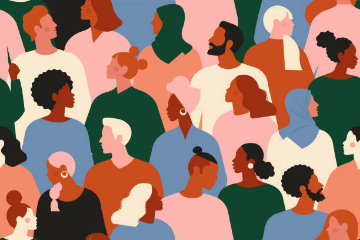This year’s PTA diversity lessons

Image courtesy of iStock.
December 11, 2020
Solon High School (SHS) boasts a diverse population on multiple fronts, including race, gender, sexuality, religion and socio-economic status. However, SHS’s diversity doesn’t mean that there isn’t a lack of inclusion in the school.
Last fall, over 1400 SHS students took the Diversity and Inclusion survey, which reviewed students’ experiences at school regarding the social climate. Results revealed problems of discrimination in multiple areas. To address these problems, monthly diversity lessons have been implemented in SHS this school year.
Michelle Shene, the PTA committee chair for diversity and inclusion, explained the origin of the diversity lessons.
“Probably about two years ago, the national organization for the PTA actually started an initiative for diversity and inclusion,” Shene said. “So at the high school, it kind of sat vacant for a year, that position for the PTA, so when I came in… [SHS Principal] Ms. Short and I decided that in order to better tailor our diversity and inclusion program to our school, we would do the survey. So that’s kind of how we started it, and then off the results of the survey we decided to do the monthly lessons.”
The lessons themselves are created by subcommittees of the PTA Diversity and Inclusion committee. The committee is composed of a diverse group of parents, teachers and administrators, which includes Principal Erin Short, Assistant Principal Josh Frazier, and teachers Mark Mauldin, Aaron Jeter, Bryan Ashkettle, Kelly Fishman and Travis Fankhauser.
“We kind of went off the survey, and we picked out the top areas that the kids said that they had been discriminated with, and so then we decided to break those down to each month,” Shene said. Future topics will include race, ableism, body image, sexism and the LGBTQ+ community.
After the lessons are created, they are then shared with a diverse student advisory board for feedback.
“In fact, the religious discrimination lesson, they took half of it out,” Shene said. “They didn’t like half of it. So we just kind of took that out and… we’re really trying to listen to the… students, and do what they feel is relevant and what they want to learn about.”
The feedback is taken into account by the subcommittee. After changes are made, the lesson is shared with SHS staff and taught to students.
Students have already experienced two lessons which addressed classism and religion. SHS junior, Margarita Brokhman, shared her opinion on the lessons.
“I feel that the diversity lessons are very helpful, and I am able to expand my vocabulary, and I’m able to apply those definitions in real life,” Brokhman said. “I hadn’t thought about the differences between equality and equity before the first presentation and it’s a big part of ending racial divides in our country.”
SHS junior, Chinmayee Ramaswamy, had a different opinion on the lessons.
“I dislike the lessons,” Ramaswamy said. “The intentions behind them are good, but the way they’re going about it itself isn’t great. Instead of making a test type set-up, like multiple choice, there should be more of a discussion invoking set-up, like open-ended questions, overall more thought provoking, almost like a Socratic seminar, which would get people to share their stories and make the lessons more effective. Also, the presentations should be shortened. Many teachers are finding it very difficult to run through the 60 to 70 slide long presentation in a 30 minute time period.”
Principal Short and Shene explain the aim of the diversity lessons.
“Our overarching goal is to create an awareness of the culture in our building and how our individual actions and our collective actions affect those around us, especially as it relates to creating an inclusive environment and respecting all of the diverse students and staff that we have in our building,” Short said.
Shene believes the diversity lessons will make an impact on the students of SHS.
“I know that there’s a lot of doubt… on whether things will really change at the high school or if this is something that is going to continue to be talked about, and so I am hoping that as we do these lessons and teachers become more comfortable giving these lessons and having more discussions that eventually… the students feel like they can bring their full selves to school,” Shene said. “So you don’t feel like you have to hide part of who you are. So hopefully, I mean I guess in my grand scheme, I want to create the next generation of kids who can have conversations about stuff and who can change the world.”
